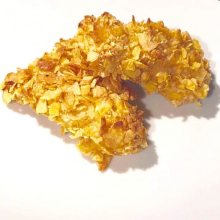There is one question I am asked more than any other, and it’s a question we have all probably wondered about at one time or another – today I’m going to answer it.
It concerns the optimum amount of carbohydrates to consume after working out. The fact that we need to consume carbohydrates after training has been accepted by the majority of the population who works out. But the question of how many carbohydrates to consume has remained generally unexplored, and there are varying opinions on the topic.
Important Parameters
Which factors influence the appropriate amount of carbohydrates to consume after working out? The answer to this question will provide our overall answer. We’ll need to pay attention to the following points in making our calculations:
– Gender
– Muscle mass
– Muscles trained
– Length of workout
Women burn proportionally more fat. At a pulse rate where men would already be in an anaerobic metabolic range and would be burning carbohydrates almost exclusively, women would still be burning a larger percentage of fat to achieve the same amount of energy. This difference, however, is not very large.
Muscle mass and the muscles trained are much more decisive. A 100kg bodybuilder needs many more carbohydrates than a 50kg woman.
In the same way, you need many more carbohydrates, or muscle glycogen, when you are working out your legs, for instance, than when you are working out your arms. The muscles involved have a much larger mass.
Another factor is the length of your workout, which influences how your body uses carbohydrate.
Let’s look at this process in detail:
Capacity of muscle and liver glycogen
First of all, we need to determine the overall amount of glycogen in the body. This is made up of muscle glycogen and liver glycogen.
From academic papers on dissections, we know that the average liver can store approximately 120g of carbohydrates as liver glycogen.
Maximum liver glycogen capacity is thus approx. 120g.
In relation to muscle mass, glycogen capacity is a little more difficult to determine, since individual differences can be very large. The most exact way to determine this value is to measure using a professional bioimpedance measurement (BIA). We get a result, the BCM (Body Cell Mass), which almost exactly corresponds to overall muscle mass.
In my work, I have determined that I can calculate a value which is almost as precise as the BCM using the parameters of body weight and percentage of body fat, and plugging them into a formula.
With variations, you can use the PWO CarbCalc to determine the PWO carbohydrate amount.
We know our overall muscle mass. Using it, we can determine the overall amount of muscle glycogen stored in our muscles.
One kilogram of muscle mass can store, on average, 10g of carbohydrates.
Example:
A strong bodybuilder with 60kg of muscle mass (BCM) can store 600g of carbohydrates in all of his musculature. His muscle glycogen capacity is 600g.
We have 120g of liver glycogen and 600g of muscle glycogen. This results in a total glycogen capacity of 720g in this example.
So, we know how to measure and compute overall glycogen capacity. Now we can continue to our question: how much of this glycogen do we actually use while working out, and need to replenish later?
Muscles trained
One important parameter in making our calculation is the percentage ratio of trained muscle mass. If we are working out our whole leg including the gluteus, then we have used almost half of our muscle glycogen – assuming we are working out in an intense manner and using high volume training. On the other hand, if we are working out only our biceps and triceps, then we’re only using less than 10% of our overall muscle mass. This means 5x less carbohydrates used.
In PWO CarbCalc, the carbohydrate calculator assigns a percentage ratio to each muscle, determined using MRT measurements. These are only average values – a cyclist who has especially well developed leg muscles, for instance, would have a higher percentage ratio of leg muscle mass.
Although an individual’s values might vary slightly, in practice the calculator still works well for most people.
Length of workout
The length of a workout is another factor which influences the PWO carbohydrate amount. These calculations are based on a value of 0.5-1.5 g/min of carbohydrate. This value is independent of sex and personal goals (diet / muscle building)
In muscle building, we completely replenish liver glycogen, while in diet phases we would replenish only a part of it. Gluconeogenesis would then need to step in and provide any missing glucose.
When it comes to consuming carbohydrates, we still need to make sure consumption does not fall below a critical level, since that would increase the danger of losing muscle mass.
Calculation
Now we’ve covered all the parameters necessary to calculate the amount of carbohydrates needed to replenish glycogen storage.
Let’s take the example of a heavy bodybuilder who has 60kg of muscle mass. Today he’s working out his chest, triceps, and biceps for 60 minutes, and his goal is to build muscle corresponding to a ratio of 16% of his body weight.
He has 600g of muscle glycogen and uses 96g of it. At the same time, he uses a maximum of 78g of available liver glycogen. This means he needs to consume PWO 174g of carbohydrates.
Note
Of course, this is not an exact science. There are always other factors which might come into play (elevated thermogenesis, for example) and the parameters I’ve named above can never be determined with 100% certainty.
We are all humans, not machines. That’s why nutrition isn’t an exact science. However, these calculations do function very well in practice, since they take into account multiple different parameters and deliver fairly exact results.
The most important thing is to be sure we are not simply carb cycling, but making logical choices about carbohydrate intake according to which muscles we are working out.
You can find the PWO CarbCalc on my website here.
You can find more information about this type of calculation in my other articles, as well as how to think about your carbohydrate intake even when you’re not working out.




